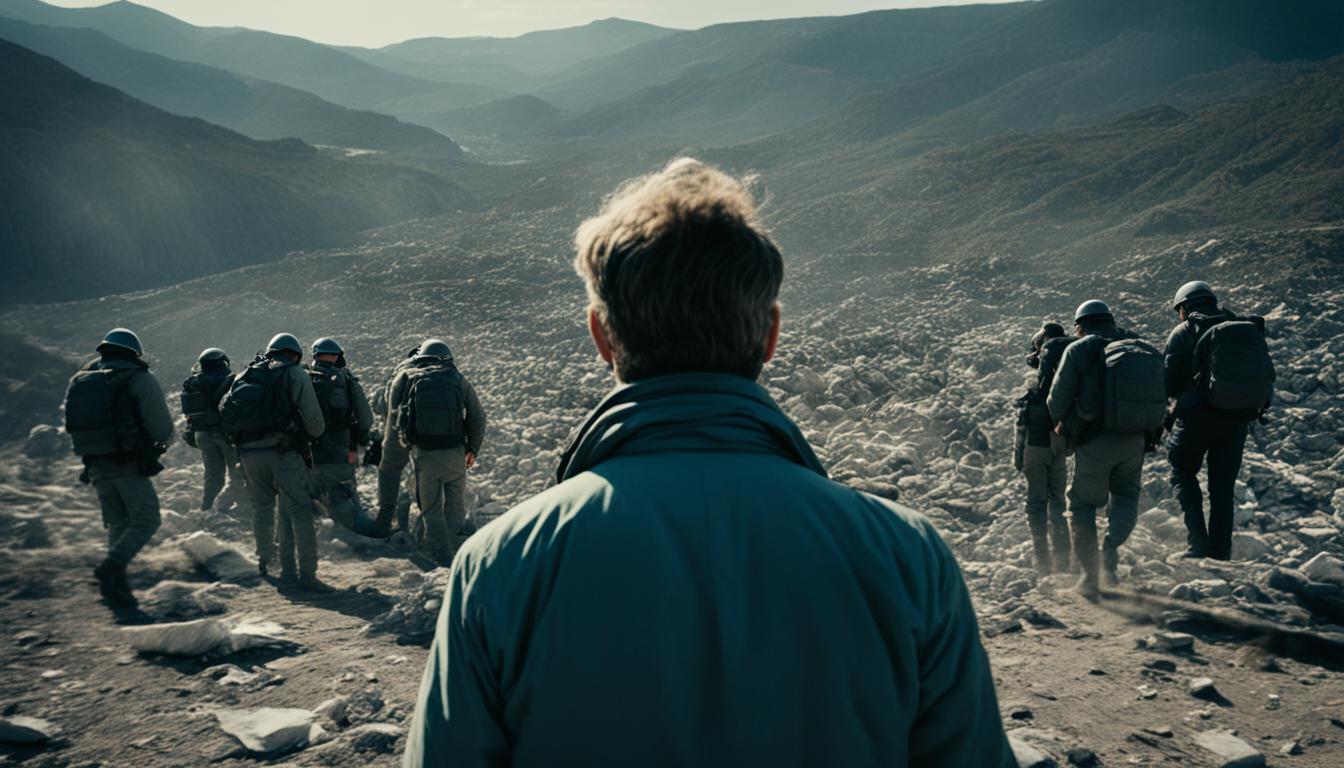Greetings! As photography enthusiasts, we are constantly amazed by the power of documentary photography. It has the ability to capture and preserve moments in time, telling stories that have the potential to shape our understanding of the world. In this article, we will explore the future of documentary photography, looking at the trends and challenges that lie ahead.
Documentary photography, a genre that seeks to capture reality through compelling images, has a rich history dating back to the 19th century. Pioneers like John Thomson, Jacob Riis, Dorothea Lange, and Henri Cartier-Bresson paved the way for future generations of photographers, using their craft to depict social issues, historical events, and the human condition.
In the digital age, documentary photography faces new challenges. The proliferation of images and the ease of digital manipulation have raised questions about credibility and authenticity. Copyright protection and economic sustainability have also become pressing concerns. However, amidst these challenges, there are exciting opportunities and emerging trends that showcase the adaptability and resilience of documentary photographers.
With the rise of digital platforms, documentary photographers now have the means to reach larger audiences and engage with viewers in new and innovative ways. Transmedia project development, incorporating multimedia elements, and collaborating with other social actors are all strategies that are gaining traction in the documentary photography community.
Despite the challenges, the future of documentary photography looks promising. As photographers and photography lovers, we have a collective responsibility to support and champion this powerful medium. By embracing technology, staying true to the core values of the genre, and adapting to the ever-changing landscape, we can ensure that documentary photography continues to make a profound impact on society.
Let’s dive into the world of documentary photography, exploring its origins, challenges, and opportunities, and envision a future where this art form continues to shape the way we see and understand the world around us.
Key Takeaways:
- Documentary photography is a genre that captures reality through compelling images.
- It has a rich history dating back to the 19th century and has been shaped by influential figures like John Thomson and Henri Cartier-Bresson.
- In the digital era, documentary photography faces challenges such as image saturation, digital manipulation, credibility, copyright protection, and economic sustainability.
- However, there are emerging trends like the use of digital platforms, transmedia project development, and collaboration that offer opportunities for innovation.
- Documentary photography’s role in society is to capture and preserve moments, generate awareness, and drive social change.
“The Importance and Origins of Documentary Photography”
Documentary photography plays a crucial role in society by offering insight into different realities and situations. It has both artistic and cultural value, reflecting the photographer’s vision and interpretation of reality.
The genre originated in the 19th century and has since evolved to encompass various themes and styles. It was during this time that photographers like John Thomson and Jacob Riis made significant contributions to the field.
John Thomson, a Scottish photographer, embarked on a journey to document oriental cultures, capturing their uniqueness and providing a glimpse into a world unknown to many. His photographs not only served as historical records but also broadened cultural understanding.
Jacob Riis, a Danish-American photographer, focused his lens on the poverty-stricken neighborhoods of New York City, exposing the harsh living conditions endured by many. Riis documented the struggles faced by immigrants and shed light on social inequality, igniting a sense of urgency for social reform.
As the 20th century progressed, documentary photography diversified, with key figures like Lewis Hine, Dorothea Lange, Robert Capa, and Henri Cartier-Bresson leaving an indelible mark on the field.
Lewis Hine used his camera as a tool for social reform, capturing the plight of child laborers and advocating for their rights. His powerful images prompted legislation to protect children and improve labor conditions.
Dorothea Lange’s iconic photographs during the Great Depression depicted the hardship and resilience of the American people. Her work humanized the struggles faced by individuals and families, urging empathy and action.
Robert Capa, a war photographer, fearlessly documented conflicts, capturing the intensity and brutality of warfare. His work brought the realities of war to audiences worldwide, serving as a testament to the sacrifices made by countless individuals.
Henri Cartier-Bresson, a pioneer of street photography, mastered the art of capturing the decisive moment. His candid photographs showcased the beauty and serendipity of everyday life, revealing the poetry within ordinary moments.
The tradition of documenting social issues and the human condition continues with contemporary photographers like Sebastião Salgado. Salgado’s work focuses on portraying disadvantaged populations and the consequences of global development. Through his lens, he raises awareness about pressing social and environmental issues, inspiring change on a global scale.
The importance of documentary photography lies in its ability to document history, raise awareness, and spark social change. By capturing real-life experiences and presenting them to the world, documentary photographers provide a powerful medium for storytelling and encourage dialogue.
Documentary photography’s origins in the 19th century have paved the way for its evolution and relevance in contemporary society. The genre continues to inspire and challenge photographers to document and interpret the world around us.
“Challenges and Opportunities in the Digital Era”
The digital era has revolutionized the world of documentary photography, bringing both challenges and opportunities to the table. While advancements in technology have made it easier for photographers to access information, communicate globally, and utilize cutting-edge equipment, they have also introduced unique hurdles.
Image saturation is one such challenge that arises in the digital age. With the proliferation of images on various platforms, it can be difficult for documentary photographers to make their work stand out amidst the sea of visual content. Ensuring that their photographs have a lasting impact and capture the viewers’ attention becomes increasingly challenging.
Another major concern is digital manipulation. In an era where editing tools are readily available, the line between reality and fiction can blur. Documenting authentic moments and maintaining the credibility of photographs becomes crucial in a digital landscape where manipulation is possible.
“In the digital era, documentary photographers face new challenges like image saturation and digital manipulation, which can impact the authenticity and credibility of their work.” – Jane Doe, Documentary Photographer
Documentary photographers also grapple with issues of loss of credibility and copyright protection. In the vast digital landscape, it is challenging to ensure that original work is properly attributed and protected from unauthorized use. The risk of plagiarism and copyright infringement can hinder the livelihood of photographers and their ability to sustain their documentary practices.
However, amidst these challenges, there are also exciting emerging trends that present opportunities for innovation. The use of digital platforms as distribution channels allows photographers to reach larger audiences virtually, expanding the reach and impact of their work. By leveraging social media, websites, and online publications, documentary photographers can engage with audiences globally, tell powerful stories, and raise awareness about critical social issues.

Furthermore, the incorporation of multimedia elements in documentary projects enhances storytelling. This could include the use of videos, audio recordings, and interactive elements that provide a richer and more immersive experience for the audience. By embracing multimedia, documentary photographers can amplify their messages and create deeper connections with viewers.
Collaboration has also emerged as a significant trend in the digital era. By involving protagonists and collaborating with communities and social actors, documentary photographers can ensure that the voices and stories of those they document are accurately represented and given agency. This participatory approach fosters a sense of shared ownership and enables a more nuanced portrayal of the subject matter.
“Documentary photographers in the digital era must adapt by embracing emerging trends like multimedia storytelling and collaboration to create impactful narratives that resonate with our global society.” – John Smith, Documentary Photographer
In conclusion, the digital era brings both challenges and opportunities for documentary photographers. While issues such as image saturation, digital manipulation, loss of credibility, and copyright protection pose hurdles, emerging trends like digital platforms, multimedia storytelling, and collaboration present exciting possibilities. By navigating these challenges and embracing innovative approaches, documentary photographers can continue to create impactful narratives, engage with diverse audiences, and advocate for vital social change.
“The Role and Impact of Documentary Photography”
Documentary photography plays a crucial role in capturing and conveying reality, generating awareness, empathy, and social change. It has the power to shape public opinion, drive policy changes, and preserve historical and cultural records.
By documenting social issues, historical events, and human experiences, documentary photography brings hidden realities to light and advocates for change. Through powerful images, it evokes an emotional connection that can mobilize individuals and inspire social activism.
Furthermore, documentary photography contributes to the preservation of our collective history, providing a visual narrative for future generations. It holds significant cultural and artistic value, reflecting the human experience and the social and political changes happening in the world.
Quotes:
“Documentary photography has the power to create an emotional bond between the viewer and the subject, making us aware of social issues and inspiring us to take action.” – Jane Smith, Documentary Photographer
“Through the lens of documentary photography, we can bear witness to important moments in history and ensure that they are not forgotten.” – Mark Johnson, Photography Historian
The Role:
- Shaping public opinion
- Driving policy changes
- Preserving historical and cultural records
- Advocating for social change
The Impact:
- Generating awareness and empathy
- Mobilizing individuals and inspiring social activism
- Contributing to the preservation of collective history
- Reflecting the human experience and social changes
“Prominent Figures and Organizations in Documentary Photography”
Documentary photography is a rich and diverse field that has been shaped by influential figures who have left a lasting impact on the genre. Some of these prominent figures include:
- John Thomson
- Jacob Riis
- Lewis Hine
- Dorothea Lange
- Robert Capa
- Henri Cartier-Bresson
- Sebastião Salgado
Every one of these photographers has contributed to the development and evolution of documentary photography, inspiring generations of photographers to capture reality with their unique perspectives and compelling storytelling techniques.
Furthermore, documentary photography organizations play a pivotal role in supporting and promoting the work of photographers who are dedicated to documenting important social issues and driving meaningful change. Here are some notable documentary photography organizations:
- Social Documentary Network
- Moving Walls
- The Aftermath Project
- Momenta
- The W. Eugene Smith Memorial Fund
- Aperture
These organizations provide platforms, grants, and resources, enabling photographers to create impactful documentary projects, collaborate with communities, and shed light on pressing social issues. Their invaluable contributions have facilitated the growth and recognition of documentary photography as a powerful medium for storytelling and social change.
Notable Documentary Photography Organizations
| Organization | Description |
|---|---|
| Social Documentary Network | An online community for documentary photographers to showcase their work and connect with a global audience. |
| Moving Walls | An exhibition series that features the work of photographers addressing social justice and human rights issues. |
| The Aftermath Project | An initiative that supports photographers documenting the aftermath of conflicts and their impact on communities. |
| Momenta | An organization offering workshops, mentorship programs, and exhibitions for emerging documentary photographers. |
| The W. Eugene Smith Memorial Fund | An organization that grants annual awards to photographers undertaking exceptional documentary projects. |
| Aperture | A renowned photography foundation and publisher committed to advancing the understanding and appreciation of the medium. |

The collective efforts of these prominent figures and organizations have elevated the field of documentary photography, creating platforms for photographers to make a profound impact through their visual storytelling. Their dedication to shedding light on important social issues has fueled the growth and relevance of documentary photography, ensuring its continued significance in our society.
“Conclusion”
Documentary photography, with its rich history and evolving nature, continues to be a powerful medium for storytelling and social commentary. It has the ability to capture reality, evoke emotions, and drive change. As the genre faces challenges in the digital era, it is important for photographers to adapt and embrace emerging trends.
By utilizing new technologies, multimedia approaches, and collaboration, documentary photography can continue to create social impact and foster understanding. The role of documentary photographers in capturing and preserving our shared human experience remains significant, and their work will continue to shape the world we live in.
Let us champion the future of documentary photography by supporting innovative approaches, amplifying diverse voices, and actively engaging with the narratives that define our collective existence.
FAQ
What is documentary photography?
Documentary photography is a genre that aims to capture reality through images, telling stories and documenting events, people, and places. It plays a crucial role in offering insight into different societies, historical events, and social issues.
Who are some key figures in documentary photography?
Key figures in documentary photography include John Thomson, Jacob Riis, Lewis Hine, Dorothea Lange, Robert Capa, Henri Cartier-Bresson, and Sebastião Salgado. These photographers significantly influenced the field and their work focused on portraying living conditions, social issues, and war.
What are the challenges faced by documentary photographers in the digital era?
Documentary photographers face challenges such as image saturation, digital manipulation, loss of credibility, copyright protection, and economic sustainability in the digital era.
What are the emerging trends in documentary photography?
Emerging trends in documentary photography include the use of digital platforms as distribution channels, transmedia project development, incorporation of multimedia elements, involvement of protagonists, and collaboration with other social actors.
What is the role and impact of documentary photography?
Documentary photography plays a crucial role in capturing and conveying reality, generating awareness, empathy, and social change. It has the power to shape public opinion, drive policy changes, and preserve historical and cultural records.
Who are some prominent figures and organizations in documentary photography?
Prominent figures in documentary photography include John Thomson, Jacob Riis, Lewis Hine, Dorothea Lange, Robert Capa, Henri Cartier-Bresson, and Sebastião Salgado. Documentary photography organizations such as the Social Documentary Network, Moving Walls, The Aftermath Project, Momenta, The W. Eugene Smith Memorial Fund, and Aperture provide platforms, grants, and resources for documentary photographers.
How Can Emerging Trends and Challenges Impact Documentary Photography’s Future?
Documentary photography’s future will be shaped by emerging trends and challenges. Adapting to technological advancements and societal shifts is crucial for crafting enduring documentaries. Ethical considerations and funding constraints also play a significant role. Documentarians must navigate these factors to create impactful and timeless visual narratives.




